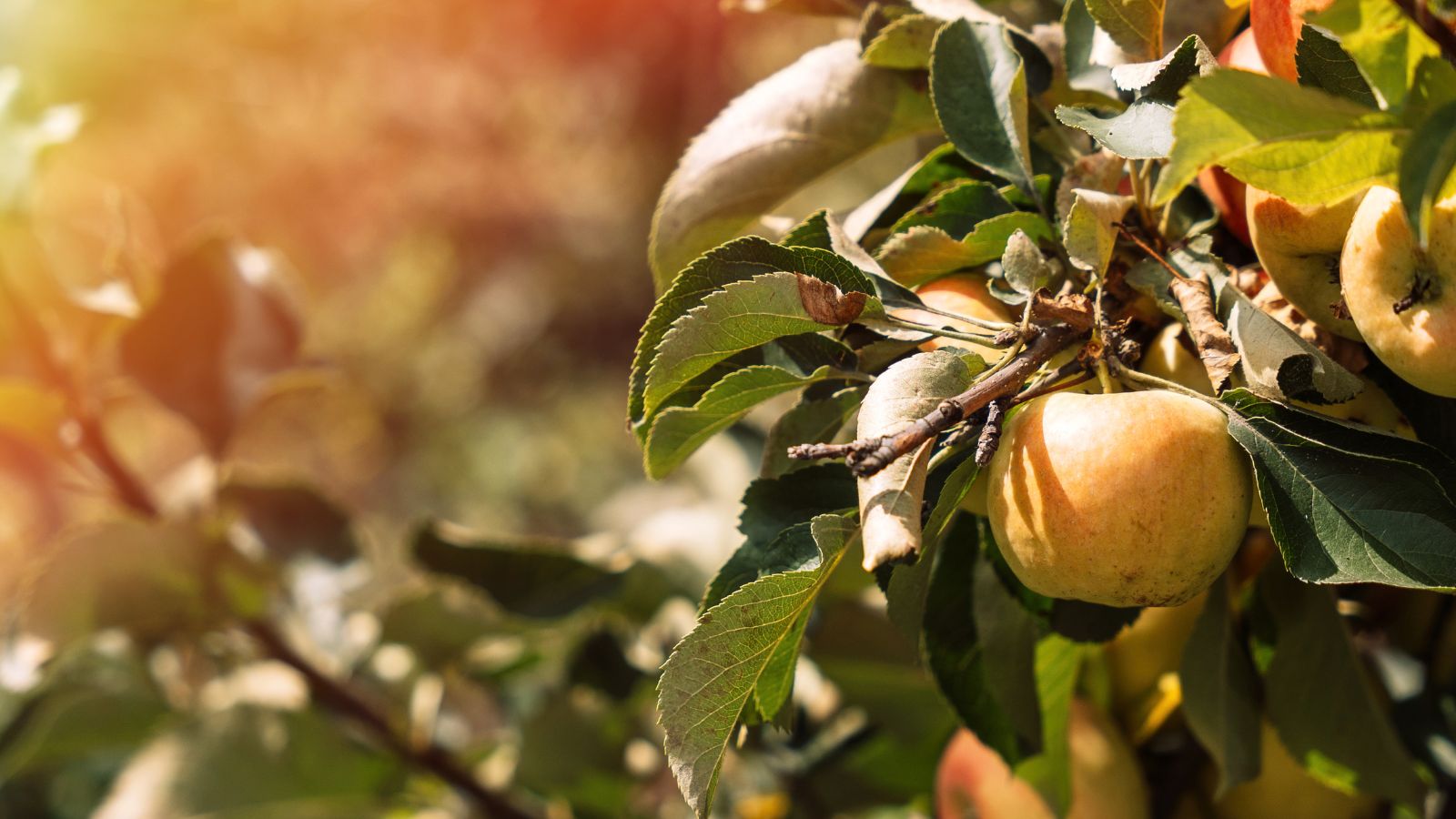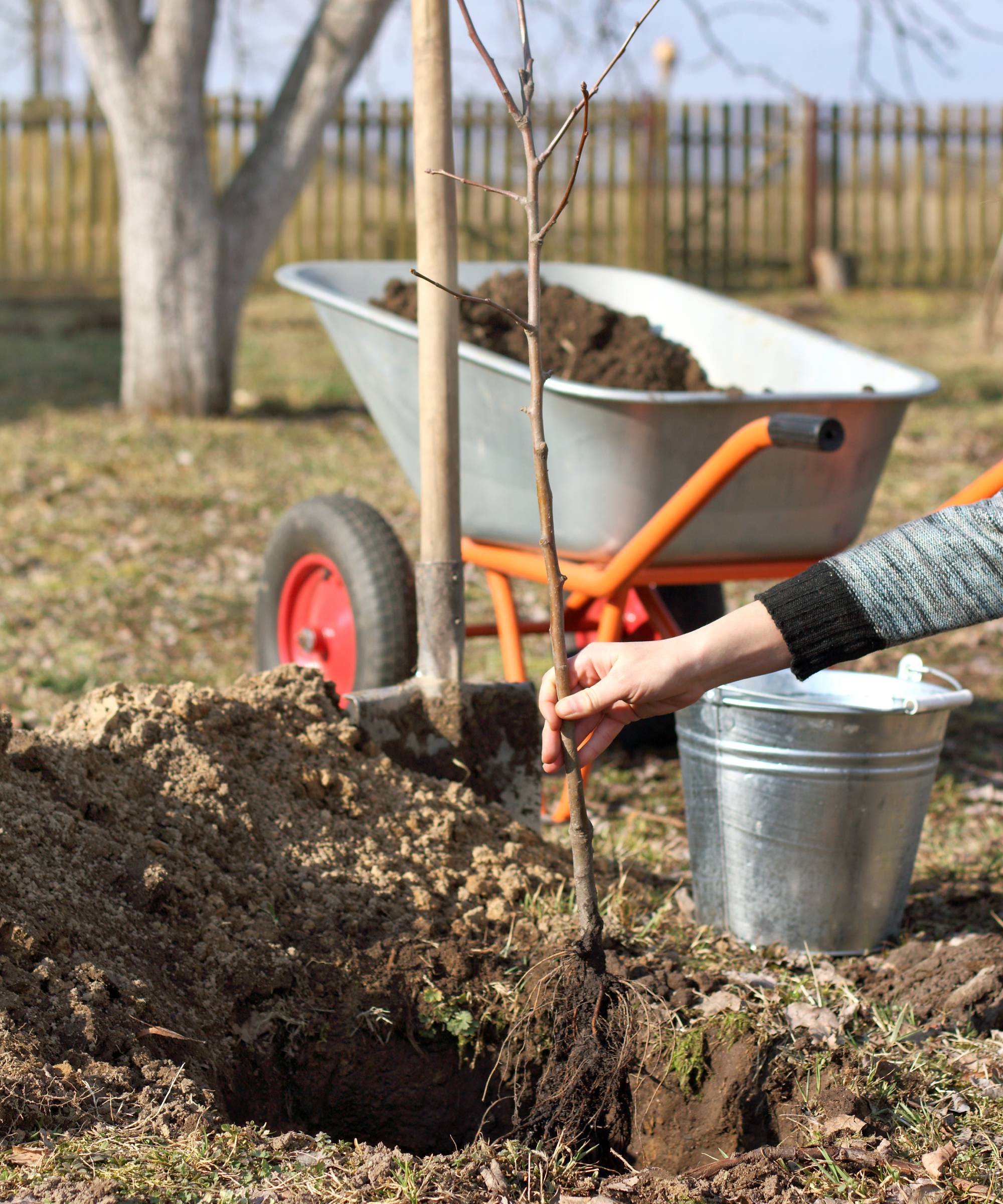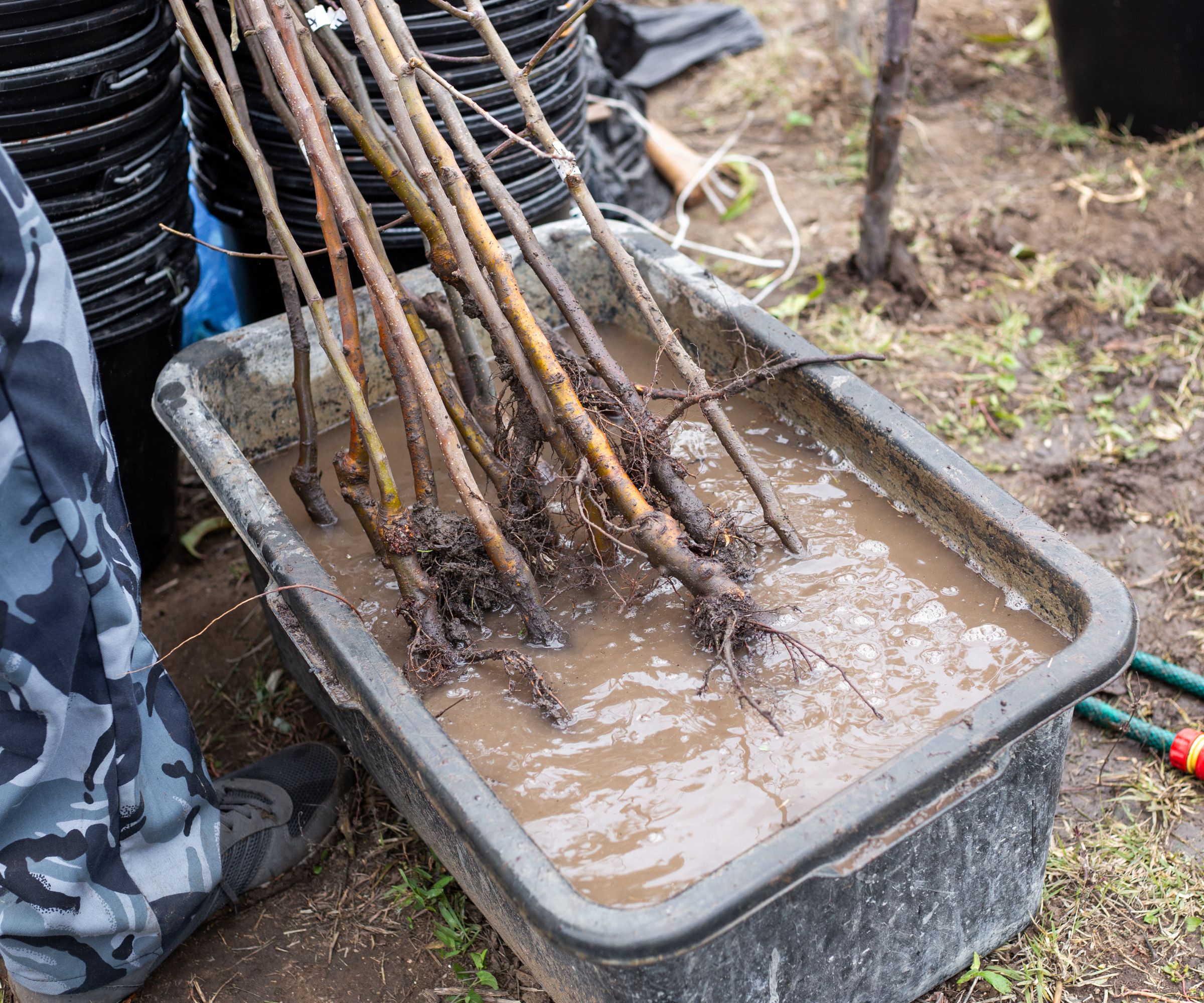When I Plant Fruit Trees in the Fall, I Always Do These 2 Things to Help Them Thrive
Now is the perfect time to plant fruit trees (especially if you want to do it on the cheap), so long as you do these two things…


It’s apple pie season, so you’d best believe I like to celebrate it by planting accordingly – and, when I plant fruit trees in the fall, there’s two things I always do to help them thrive.
Yes, now is a brilliant time to get planting; the air feels sharp, the soil still holds warmth, and it’s a great time for bargains, too. Not just because garden centres are clearing stock, but because bare-root fruit trees start to appear online and in catalogues, often for half the price of their potted counterparts.
Bare-roots do exactly what they say on the tin; they’re dormant trees sold without soil, their roots wrapped in a bit of damp sawdust or paper to keep them moist.

This doesn’t just make them easier to carry; they also settle in faster because their roots grow directly into your soil rather than a plastic pot. If you’ve only ever planted container trees, they’re a revelation: you can plant more for less, and they often establish more quickly and strongly.
So, how best to help them on their way? Well, after trial and error (and a few underwhelming failures), I’ve learned that two simple steps make all the difference between a tree that limps along and one that surges into growth come spring.
1. Soak the Roots

The first thing I do to help my bare-root fruit trees thrive is simple enough: I give them a long drink before planting. And I mean a long drink; I’m talking at least four hours, but ideally overnight.
To do this, I fill a clean bucket with water, making sure the roots are fully submerged but the trunk stays dry. This soak lets the tree rehydrate after transport and ensures the fine root hairs (aka the ones responsible for absorbing moisture and nutrients) are plump and ready to do their job.
Sign up for the Gardening Know How newsletter today and receive a free copy of our e-book "How to Grow Delicious Tomatoes".
Skipping this step can leave the roots dry and brittle, and I’ve noticed those trees often take weeks longer to put out new growth. When they’ve soaked properly, the roots look supple and alive rather than papery and dull.
2. Use a Transplant Solution
When I plant fruit trees in the fall, I don’t just use good quality compost (although that’s an obvious must-do). Before I even think about lowering them into their planting holes, I give them a good dose of transplant solution.
Something like Amazon’s Miracle-Gro Quick Start works well, as its gentle blend of nutrients and rooting hormone helps reduce shock and stimulate early root growth.
It’s a tiny extra step, but I’ve seen the results: less leaf drop in spring, stronger early shoots, and noticeably sturdier trees by the end of their first summer. All big wins in my book!
Shop Bare-Root Planting Essentials
After that, it’s just a matter of watering well and mulching thickly to lock in moisture through winter. By spring, the first buds will start to swell, and you’ll know all your hard work has paid off.
It’s honestly my favorite hack for boosting my garden without spending a fortune. Last year, it was an apple tree; this year, my husband has big dreams for a pear tree.
They may start off small, but I like to look at them and imagine how the garden will look in five years, branches heavy with fruit and blossoms buzzing with bees. And if I can achieve that with just a bucket of water and a little care on a cold afternoon? It’s a no-brainer, really.

Kayleigh is an enthusiastic (sometimes too enthusiastic!) gardener and has worked in media for over a decade. She previously served as digital editor at Stylist magazine, and has written extensively for Ideal Home, Woman & Home, Homes & Gardens, and a handful of other titles. Kayleigh is passionate about wildlife-friendly gardening, and recently cancelled her weekend plans to build a mini pond when her toddler found a frog living in their water barrel. As such, her garden – designed around the stunning magnolia tree at its centre – is filled to the brim with pollinator-friendly blooms, homemade bird feeders, and old logs for insects to nest in.


